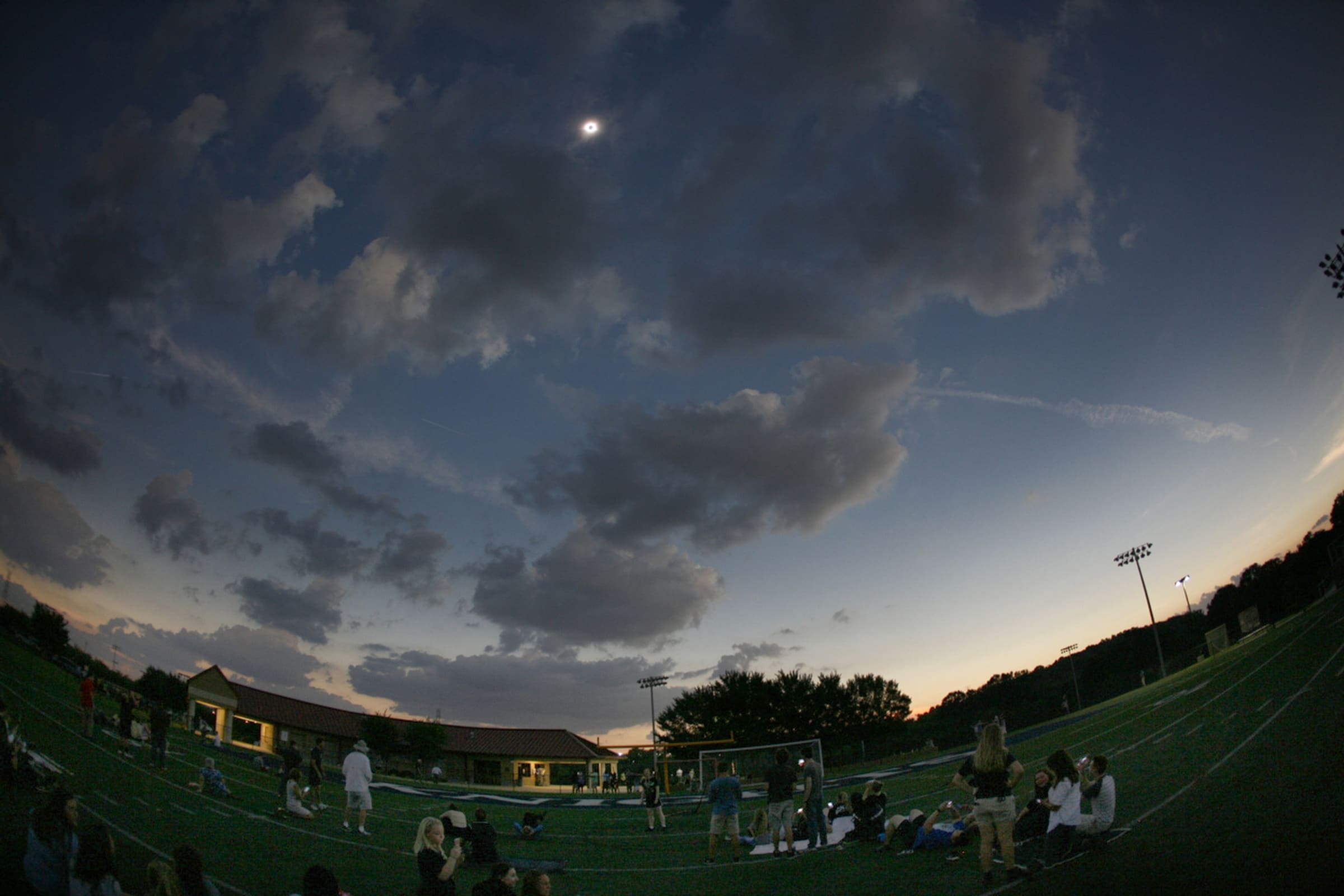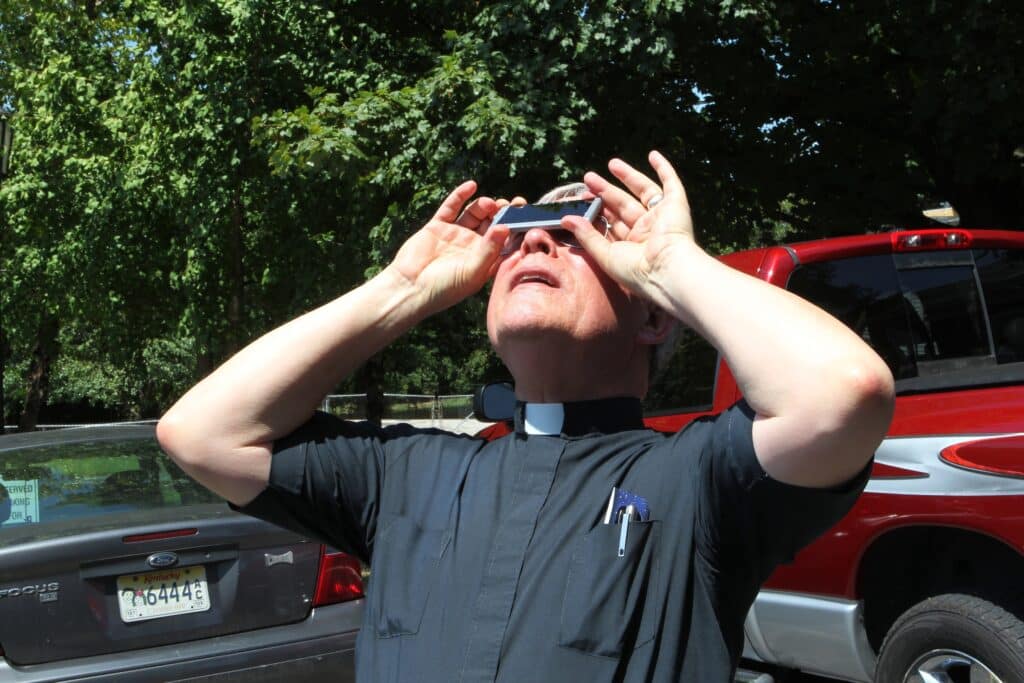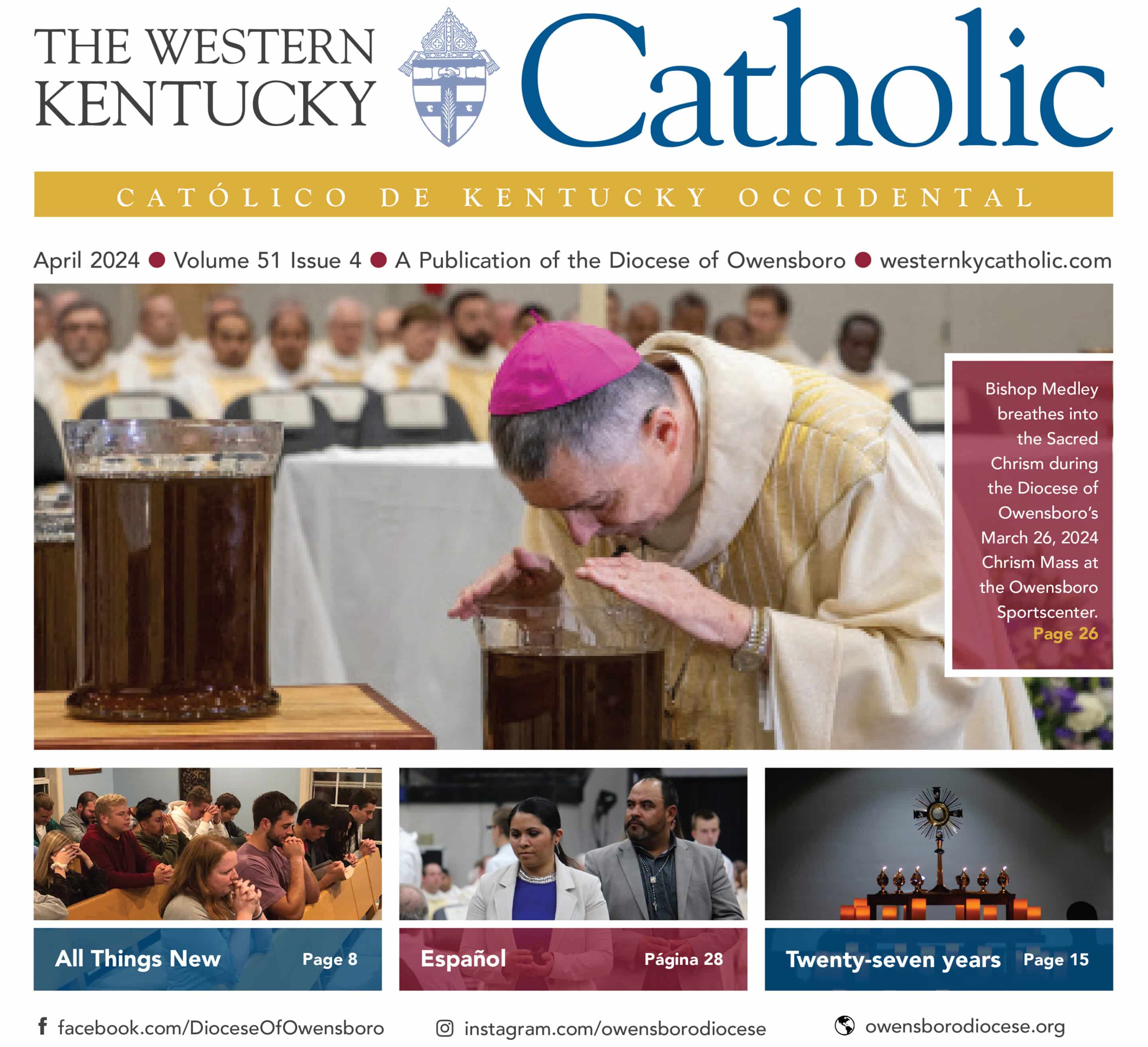
The solar eclipse is seen at John Paul II School in Hendersonville, Tenn., Aug. 21, 2017, which was also seen within parts of the Diocese of Owensboro, Ky. Another total solar eclipse, visible to many in the Owensboro diocese, will take place on April 8, 2024. It is rare for a geographic region to experience twice within seven years. (CNS photo/Rick Musacchio, Tennessee Register)
April 8, 2024: Solemnity and totality
BY FR. RICHARD MEREDITH, SPECIAL TO THE WESTERN KENTUCKY CATHOLIC
The Solemnity of the Annunciation of the Lord in 2024 is observed Monday, April 8. The feast day normally is celebrated March 25, which centuries ago was taken to be both the day of the Lord’s conception in the womb of the Blessed Virgin (the Annunciation) and the calendar day of the first Good Friday, the day of the Lord’s death on the cross. For some time March 25 was also considered by Christians to be the first day of their religious year. This view contributed to the European Christians of the 4th century observing December 25 as the day of the Lord’s birth from the Blessed Mother in Bethlehem.
Whenever March 25 lands in Holy Week or during the Octave of Easter, the solemnity is transferred to the Monday following the Second Sunday of Easter. Such is the case in 2024. For many of us in North America, a wonderfully beautiful, and for many a rare, astronomical event will occur this year on the Solemnity of the Annunciation and observed (weather permitting) in the western regions of the Diocese of Owensboro – a total eclipse of the sun. Our diocese also experienced a total eclipse of the sun in August of 2017. It is rare indeed for a geographic region to have this event to occur twice within the span of seven years.
While I have heard that some find mystic, magical, or ominous significance to the eclipse, I give thought to the conjunction of the solemnity and eclipse. Since with the Lord there are neither accidents nor coincidences, it is not vain for me to look at the solemnity through the lens of the eclipse nor to look at the eclipse through the lens of the Annunciation.
At his conception in the womb of the Virgin as she consented to God’s word, the Divine Son “emptied” himself of glory, concealed his majesty, and humbly took the form of a slave. In the lowly darkness of the human womb the Almighty Word took flesh as a one celled human embryo, and gestated there for nine months, conceived and formed, as Psalm 139 says, “in the depths of the earth.” He would lie again in those depths although differently with his death and burial some thirty years later. The eclipse of his divine glory, with the exception of a few brief glimpses, lasted his whole earthly lifetime. The Solemnity of the Annunciation of the Lord celebrates the beginning of that total eclipse or self-emptying (Philippians 2) of the Son of God with his Incarnation.
Given – the particular sizes of the sun and of the moon and their relative distances from each other and from the earth; the orbits of the moon about the earth with its perigees and apogees and of earth and moon together around the sun and their varying perihelion and aphelion; their rotational tilts and other movements; and given our particular presence at this time in their very long history – we have the experience of the moon at times and in some places blocking the orb of the sun and its light almost perfectly. It is nearly an astronomical miracle that a total solar eclipse occurs at all, but it does indeed and is quite a spectacle. The moon is so tiny, almost a pebble in size, compared to the girth and circumference of the sun, that the two must be precisely spaced at a very great distance for its smallness to occlude the vast brilliance of the solar disc. But what wonder, it does! God so formed and placed human nature in relation to himself in just the right manner of being, so that the Divine Word might assume a complete human nature, occluding or cloaking the divine glory without diminishing it. At the same time and with the proper relational distance neither was the human nature compromised or distorted, but rather it was perfected. As the Thomists say, grace builds upon nature and does not deform it, and that human nature has or is an obediential potency for God, a capax Dei. It was of this great mystery of our faith that Pope St. Leo the Great wrote in his Tome to the Council meeting at Chalcedon in 451. All these wonders of nature and of grace come from the hand of our beneficent Creator, Redeemer, and Sanctifier. Praise God!

Fr. Richard Meredith, pastor of Sts. Peter and Paul Parish and School in Hopkinsville, Ky., catches the partial phase of the total solar eclipse on parish grounds Aug. 21, 2017. The town was near the point of maximum eclipse. Another total solar eclipse, visible by Fr. Meredith’s now-parish of Holy Name of Jesus in Henderson, Ky., will take place April 8, 2024 — also the day the Church observes as the Solemnity of the Annunciation this year. (CNS photo/Dennis Sadowski)
Fr. Richard Meredith is the pastor of Holy Name of Jesus Parish in Henderson.
Read more:

